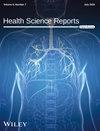Pretreatment HIV-1 Drug Resistance Among Newly Diagnosed People in Eastern Ethiopia
Abstract
Background and Aims
In Ethiopia, HIV-1 pretreatment drug resistance (PDR) data are limited owing to a lack of routine genotyping resistance tests. This study aimed to determine the prevalence of HIV-1 PDR mutations and genetic diversity among newly diagnosed people with HIV in eastern Ethiopia.
Methods
HIV RNA was extracted using Abbott m2000sp. HIV-1 partial pol genes were amplified and sequenced using the Sanger dideoxy method. DRM profiles were examined and interpreted according to the calibrated population resistance (CPR) and Stanford University HIV drug resistance algorithms. A maximum likelihood phylogenetic tree was constructed using PhyML version 3.0 and visualized using the iTOL tool. Bivariable and multivariable logistic regression models were used to identify baseline factors associated with outcomes at a p value of < 0.05.
Results
Among newly diagnosed individuals with baseline viral load (≥ 1000 copies/mL) and amplifications were successful, the genotyping success rate was 78.4%. Among the isolates successfully sequenced, three HIV-1 strains were detected, of which 97.1% had HIV-1 subtype C, 1.4% A1C, and 1.4% CF1 recombinant. According to the Stanford HIVDR algorithm, 21.7% of people had at least one drug associated PDR mutation, whereas CPR reported 14.5% DRMs. NNRTIs had the highest PDR mutation rate (13.0%), followed by NRTIs (7.2%) and PIs (2.9%). The most commonly observed major DRMs were: NNRTIs (K103N and G190A), NRTIs (D67G and L210W), and PIs (L90M and I54S). Patients who were bedridden at enrollment were more likely to harbor PDR mutations (AOR: 5.4; 95% CI: 1.53–30.7).
Conclusions
High PDR levels, predominantly for NNRTIs, are observed. During clinical follow-up, special attention should be given to bedridden functional status patients. Further surveillance studies are needed to evaluate the long-term effects of prolonged accumulation of resistance and its transmission on current ART regimens and to design appropriate interventions to halt the HIV epidemic.


 求助内容:
求助内容: 应助结果提醒方式:
应助结果提醒方式:


